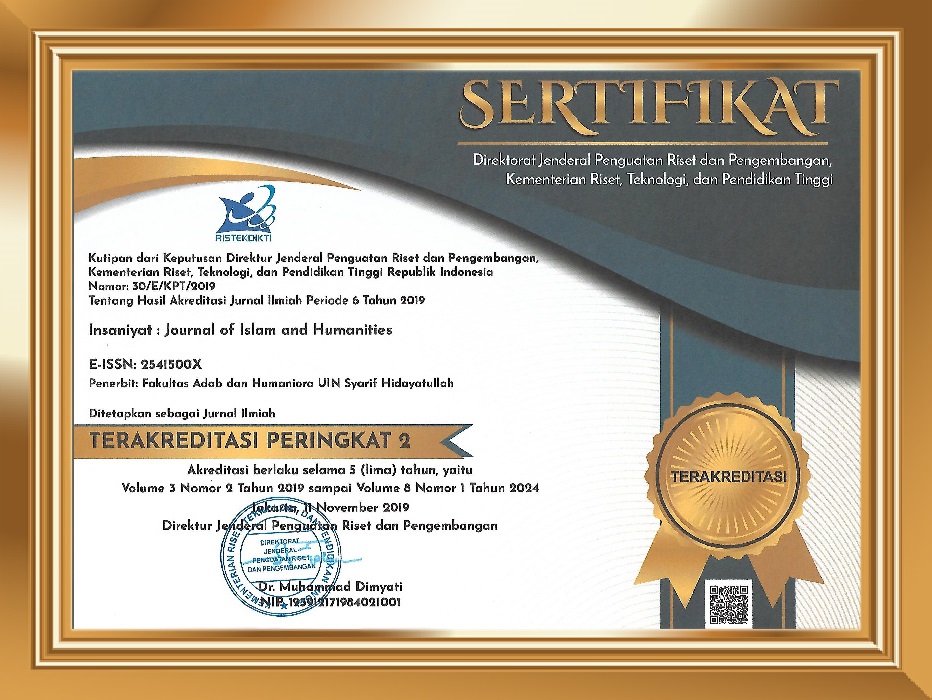The Contrast Portrayals of American and Pakistani Culture in The Big Sick Movie
Abstract
This study aims to describe the cultural stereotypes between American and Pakistani that are portrayed in The Big Sick (2017) movie. This study uses a qualitative method with a Cultural Studies approach. The analysis is done by looking at the characteristics of American and Pakistani characters by using the theory of characterization from Boggs and the theory of representation by Stuart Hall to present the cultural stereotype issues that appear in the movie (Hall, 1997). The cultural stereotype of the American and Pakistani culture is presented by some American characters (Emily and her family) and some Pakistani characters (Kumail and his family) of The Big Sick movie.
The result of the study shows that the characteristics of Pakistani characters are religious and deceitful, while the characteristics of American characters are smart and straightforward. Furthermore, through the analysis of the characters’ characteristics, the writers found the cultural stereotype in the movie. Pakistani characters are associated with conservatism and close-mindedness. On the contrary, American characters are associated with modernism and open-mindedness. It can be concluded that in this movie, American culture is depicted as more positive than Pakistani.
Keywords
References
Akhtar, Nasreen, et al. (2017). Interpersonal Problems in Arranged and Love Marriages. Pakistan Journal of Social and Clinical Psychology, 15(2), 18-22.
Alalawi, Noura. (2015). How Do Hollywood Movies Portray Muslims and Arabs? After 9/11? ‘Content Analysis of The Kingdom and Rendition Movies.’Cross-Cultural Communication, 11(11), 58-62.
Alshammari, Dalal. (2013). Islamophobia. International Journal of Humanities and Social Science, 3(15), 178-180.
Appel, Markus, Silvana Weber, Nicole Kronberger. (2015). The Influence of Stereotype Threat on Immigrants: Review and Meta-Analysis. Frontiers in Psychology, 6(900), 1-15.
Blankestijn, Lianne. (2015). From Snow White to Pitch Black: Gender and Racial Stereotyping of the Disney Princess (bachelor’s thesis). RadboudUniversiteit Nijmegen, Nijmegen, Netherlands.
DeRue, D Scott, et al. (2009). WhenisStraightforwardness a LiabilityinNegotiations? The Role of IntegrativePotentialandStructural Power. Journal of Applied Psychology, 94(4), 1032-1047.
Hall, Stuart. (1997). Representation: Cultural Representations and Signifying Practices. London: SAGE Publications.
Hutasuhut, Mahmud Layan. (2009). Language, Culture, and Society: A Theoretical Analysis of Stuart Hall’s Representation and Signifying Practices. Journal Universitas Negeri Medan.
Jalaludin. (2008). Psikologi Agama Memahami Perilaku Keagamaan dengan Mengaplikasikan Prinsip-Prinsip Psikologi. Jakarta: PT Raja Grafindo Persada
Josefová, Alena. (2014).The Cultural Diversity as a Phenomenon of the Multicultural Society. Procedia - Social and Behavioral Sciences, 152, 1019-1021.
Korez-Vide, Romana and Milan Jurse. (2016). The Role of Stereotyping in a Cultural Diverse International Business Environment. Teorija in Praksa, 53(5), 1037-1050.
Nisbet, Erik C, et al. (2013). Attitude Change in Competitive Framing Environments? Open/Closed-Mindedness, Framing Effects, and Climate Change.Journal of Communication, 63, 766-785.
Park, Hee Sun, et al. (2012). Individual and Cultural Variations in Direct Communication Style. International Journal of Intercultural Relations, 36, 179-187.
Schweinitz, Jörg. (2011).Film and stereotype: A Challenge for Cinemaand Theory. New York: Columbia University Press.
Siegel, Harvey. (2009). Open-mindedness, Critical Thinking, and Indoctrination: Homage to William Hare. Paideusis, 18(1), 26-34.
Spiegel, James S. (2012). Open-Mindedness and Intellectual Humility. Theory and Research in Education, 10(1), 1-12.
Thompson, Taylor L, and Lisa King. (2016). ‘You’re Asian; You’re Supposed to be Smart’: Adolescents’ Experiences with the Model Minority Stereotype and Longitudinal Links with Identity. Asian American Journal of Psychology, 7(2), 108-119.
Turri, Angelo, and John Turri. (2015). The Truth about Lying. Cognition, 138, 161-168.
Liu, Zhan. (2008). Communicating Race and Culture in Media: Appropriating the Asian in American Martial Arts Films (master’s thesis). Washington State University, Pullman, Washington.
Oxford Dictionaries. The World’s Most Trusted Dictionaries, https://en.oxforddictionaries.com/definition/open-minded.
DOI: 10.15408/insaniyat.v3i2.11124
Refbacks
- There are currently no refbacks.






